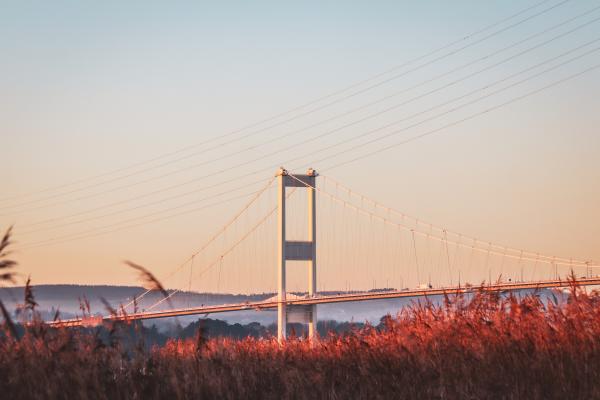By Laura Michelon, Marketing Manager, Resilience First
The conversation between our panellists at our in-person event 'Ghost towns no more: Rethinking Urban Resilience for the 21st century', in collaboration with Jacobs last month, was not only stimulating and insightful, but also vibrant for the energy that each of the expert speakers brought to the table.
Savina Carluccio, Executive Director, International Coalition for Sustainable Infrastructure (ICSI) set the tone: “Cities, and the communities within them, have changed significantly since the pandemic. As people have reassessed their lifestyles and priorities, city centres have seen a drastically changed landscape of working patterns. There is a clear need to rethink how planning and policy decision makers can best support their communities in this ‘new normal’.”
Businesses have an opportunity to be at the heart of the transformation towards a greener, healthier urban future. Recognising that solutions will span sectors and geographies, and that an all-hands-on-deck approach is needed.
City planning and resilience after covid
The Covid-19 pandemic has acted as a 'catalyst for change', driving a transformation process that was already underway. The Coronavirus Act enabled city streets to operate in different ways, allowing more flexibility in the uses of certain spaces, such as Hay’s Galleria and Monument, which were granted street licences by the City of London, to help bring life back into the city, and these have been kept on even after the pandemic has passed. This is a big change which may not have happened without the pandemic.
In order for cities to be resilient, they need investment and to secure that investment they need to have more devolution and fiscal devolution. Data plays an important role in this, and organisations such as Jacobs, with decades of experience in understanding data, are well placed to help city leaders understand these issues better. Unlocking this potential will be key in making cities more resilient.
As the trend of climate change continues to affect our world, the topic of migration has come to the forefront. Recent figures suggest that around 500,000 people are migrating to the UK every year, a figure that is around double what it was prior to Brexit. With such high levels of migration, coupled with the current housing and other services shortage, it is evident that a more system-based approach to planning is required. If it’s not possible to build on greenbelt and there’s increasing resistance from communities to build in areas that have seen pressure of housing in recent years, then it’s clear that cities will be playing an increasingly important role in meeting requirements for homes and infrastructure. This means considering the town and city centres, as well as curating those places to make them more successful. By taking a proactive approach, we can create places that really work for everyone.
“I think that Philadelphia epitomises a resilient city. What they've done is put the community, culture, and art at the heart of it. They really invested in community engagement and put the community at the heart of the plans for the future. It is a theme for success because it feels like the city's owned by the people, and they're helping to shape the future of it and shape that investment coming in. So, I think that community and culture are my two really big takeaways for building resilience”. Victoria Hills, CEO, Royal Town Planning Institute
What is the role of the built environment in accelerating climate resilience?
“Buildings and construction are a huge contributor to climate change, they represent 37% of global energy related carbon emissions, close to 40% of global resource demand, but only 7% of the materials used are kept in a productive cycle of use.” Catriona Brady, Director of Strategy and Development, World Green Building Council
With global urbanisation on the rise, over 970 cities are projected to be subjected to extreme heat, over 570 cities to be impacted by sea level rise, the need for a new built environment to accommodate the growing population is becoming increasingly urgent. This growing demand, paired with the existing built environment, creates a complex dilemma of how to balance the urgency for new construction with the need for retrofitting existing buildings.
There is a great deal of conversation and awareness about climate change, but the built environment is where the impacts will truly be felt. The World Green Building Council released a publication called Climate Change Resilience In the Built Environment last year at COP27 to help guide this effort, and they have recently launched a report on resilience and sustainability for affordable housing.
How can a city be climate resilient?
The challenges of climate change can seem insurmountable, but they can also offer opportunities to rethink cities and urban centres.
Our cities – engines of productivity, community and innovation - need to be resilient, both in the short and long-term, to ensure their viability. A recent World Economic Forum report outlined the top short-term risks as being the cost of living crisis, natural disasters and extreme weather. For the long-term, the two top risks identified were failure to mitigate climate change and failure of climate change adaptation. This clearly indicates that climate change is a major threat to our cities and, if not responded to effectively, could make them unliveable in the future. Therefore, it is essential that we work together to address the rising climate risks and create cities that can stand the test of time.
The COVID-19 pandemic has had a major impact on our daily lives, and the same can be said for extreme weather events. Take for example, London on July 18th 2022 when temperatures rose past 35 degrees Celsius; footfall dropped by 25% compared to the same time the year prior. This demonstrates the dramatic impact climate can have on people's health, as well as the productivity and livability of a city. Moreover, evidence shows that the effects of climate change often fall most heavily on those living in poverty, further deepening the existing inequalities across London.
“If we're going to rethink urban resilience, we must put climate resilience and long-term adaptation at the heart of the future solution. We must ensure that those who are most impacted are prioritised. Currently resilience is dealt with as an immediate issue, such as the fire response, emergency response, but if we keep putting a sticking plaster over the impacts, that's just dealing with yesterday's weather. The opportunity is to create a city for the climate of the future, so as well as retrofitting London’s buildings to make them climate proof, we need to focus on our public realm to ensure that adaptive benefits extend beyond individual properties.” Jude Hassall, Manager London Climate Change Partnership
Adapted, climate resilient cities can also provide a multitude of additional benefits. In order to build cities that are resilient to climate change and supportive of the community, green and blue spaces are essential. As well as providing biodiversity and climate adaptation benefits, they can also provide access to nature, improve community health and wellbeing, lead to better health outcomes for our communities, and create attractive places to live and work. Developing such cities is complex and difficult, for example, providing resilient and effective green and blue spaces involves a careful balancing of issues such as species selection, planting, management regimes, and competing priorities and risks within the planning system. To further increase climate resilience, we need more community hubs across London that offer cool spaces during times of excessive heat, as well as opportunities for networking, co-working, and mutual support for the most vulnerable. Moreover, we need to increase the shaded areas in the city and enhance our infrastructure to better support water management.
“Cities are diverse, dense and connected, exactly like the challenges that we face. They can't be solved in isolation, often no one organisation owns the risks. So, organisations across the public and private sector must work together, to find solutions and appreciate their part in the community and the system”. Jude Hassall, Manager, London Climate Change Partnership
We need to not be reactive to yesterday's weather, but proactive in creating adaptive cities of the future. “Think about the city as a system, it is about sticking people together in a room to find solutions that work across boundaries and across sectors and understanding how climate risks and impacts cascade across a city. The LCCP can act as the glue, sticking people together both to share learning, create new networks but also develop solutions.” Jude Hassall, Manager London Climate Change Partnership
Creating spaces that truly serve all of our communities. Why does inclusive design matter?
“Inclusive design is key to the evolution of the built environment towards a more sustainable and equitable future. Inclusive design is about creating places for people to take into account a diverse range of end users.” Rachel Smalley, Head of inclusive design. Cities and Places, Jacobs
Inclusive design recognises and accommodates the unique differences of end users and how people use the built environment. This is important as it goes beyond meeting the requirements of wheelchair users, and takes into account the requirements of people with a range of impairments and conditions, ages, genders, gender identities, and religious beliefs. Inclusive design creates high quality people-focused usable spaces that are comfortable, convenient, and welcoming. Inclusive design ultimately provides places and spaces that are safe and accessible for everyone.
The world is constantly changing and evolving, and as a result, so are the expectations and requirements of the population. Lockdown has further emphasised the importance of a flexible and future-proof built environment, one which is capable of accommodating changes in the way we think, operate, socialise, and live. Inclusive design is key in ensuring this flexibility, allowing our environments to easily adapt to changes. By creating a built environment which is both flexible and future-proofed, we can be sure to meet the changing requirements of the population.
“Making public places safe and peaceful for all requires flexible, integrated thinking. And it requires creating partnerships between organisations so we can deliver a better life for future generations.” Kate Kenny, People & Places Solutions Senior Vice President and General Manager, Jacobs
On behalf of Resilience First, I’d like to thank Jacobs for hosting the event and the inspiring women who joined our panel discussion.



